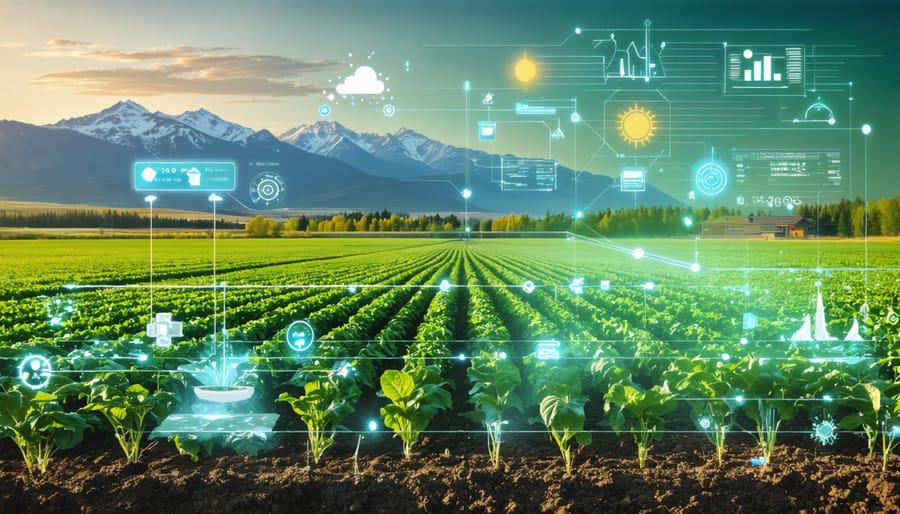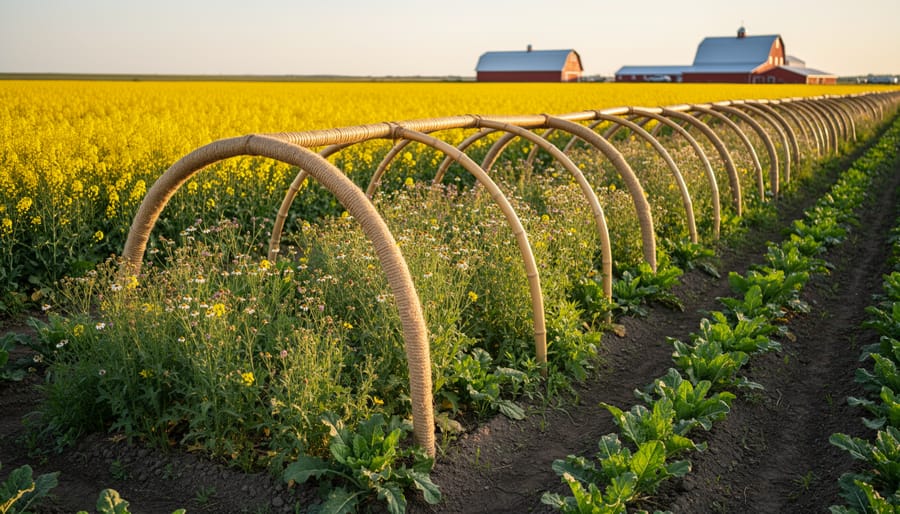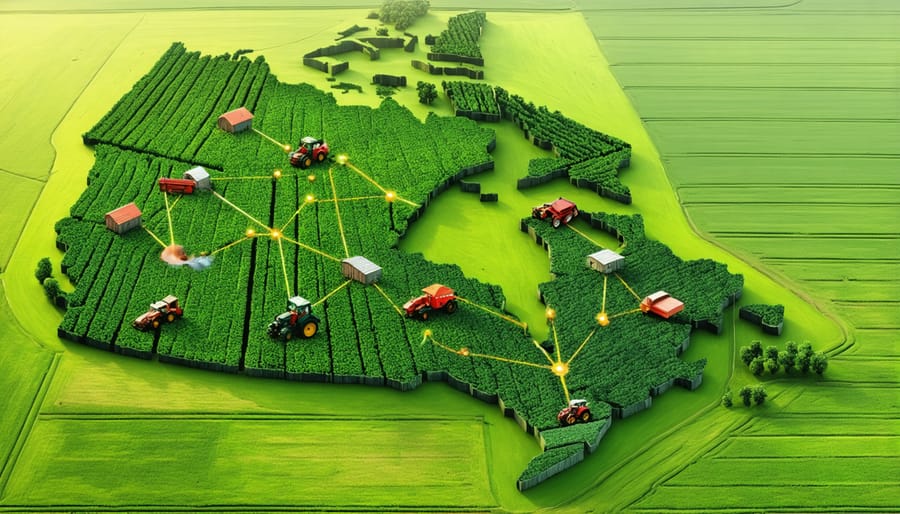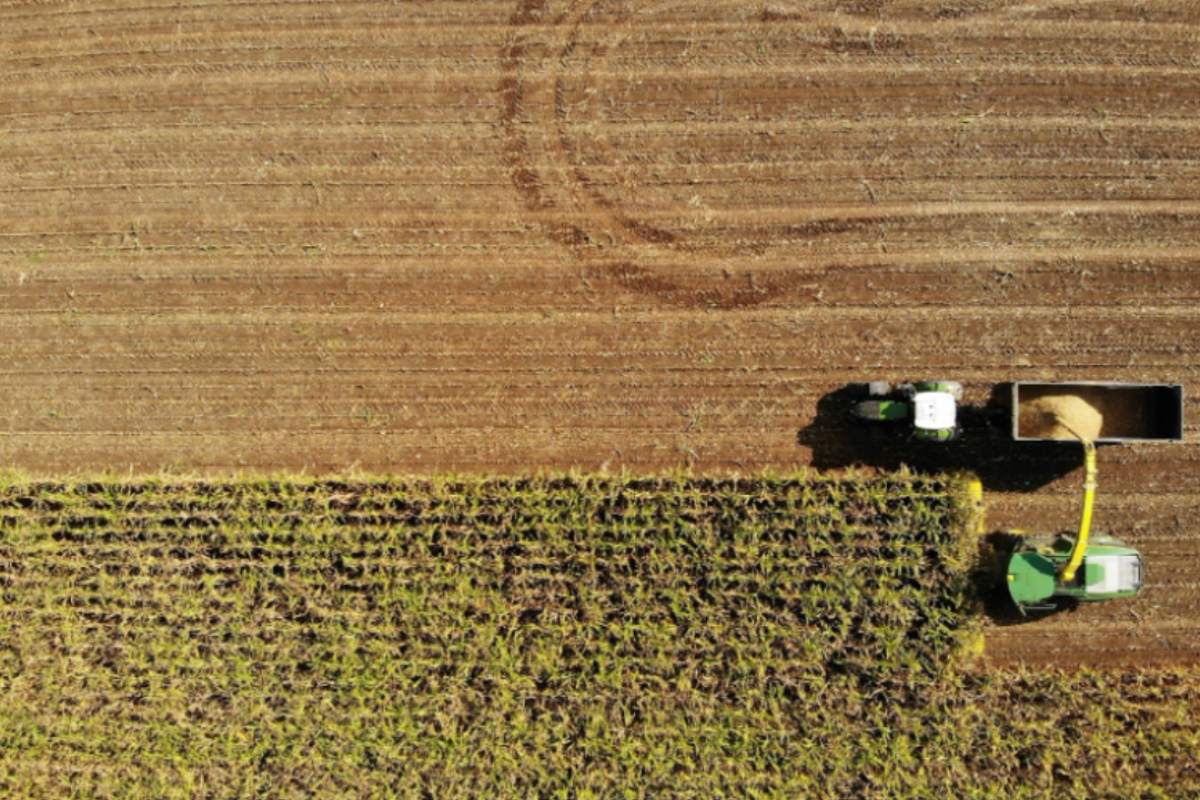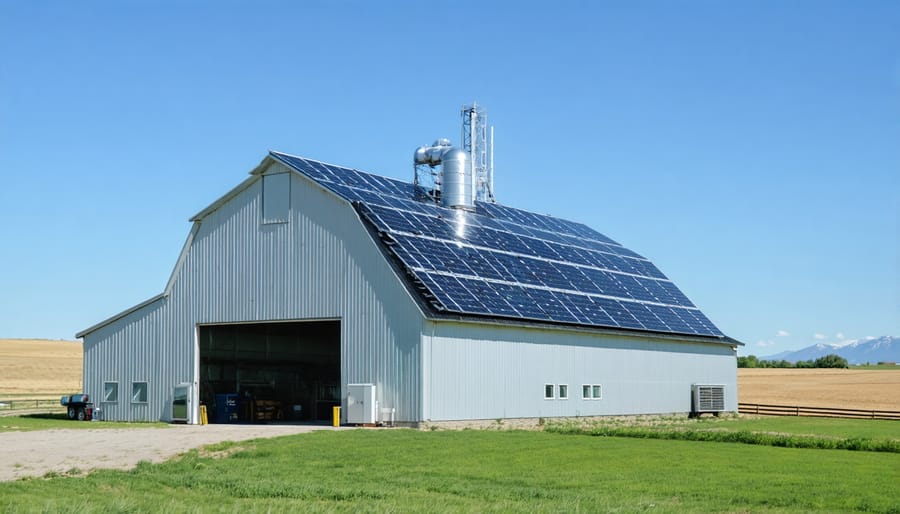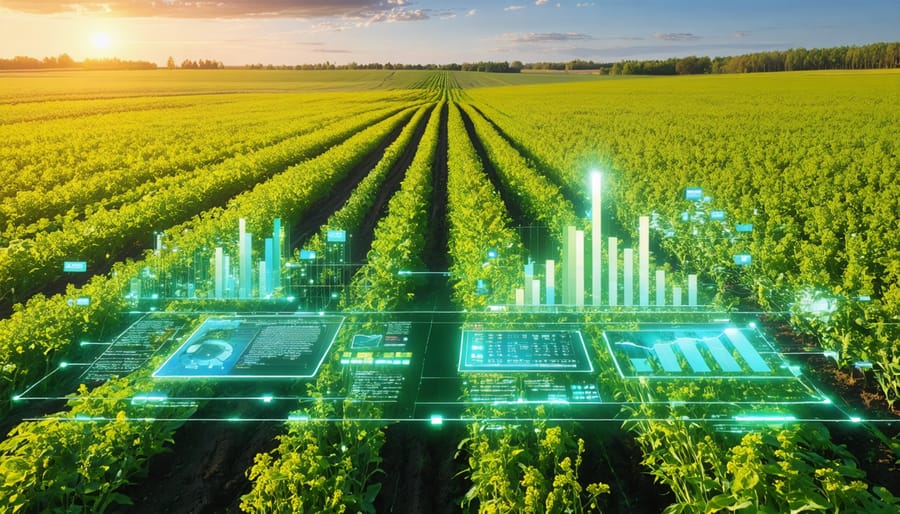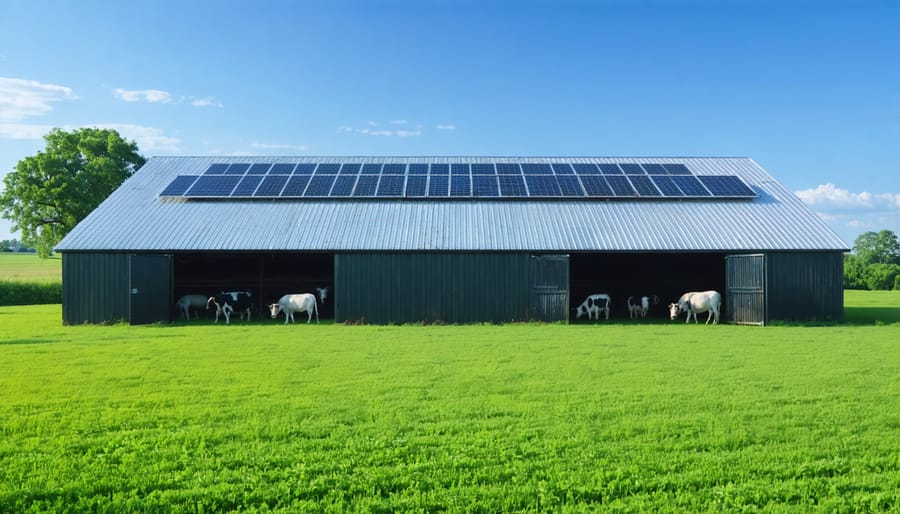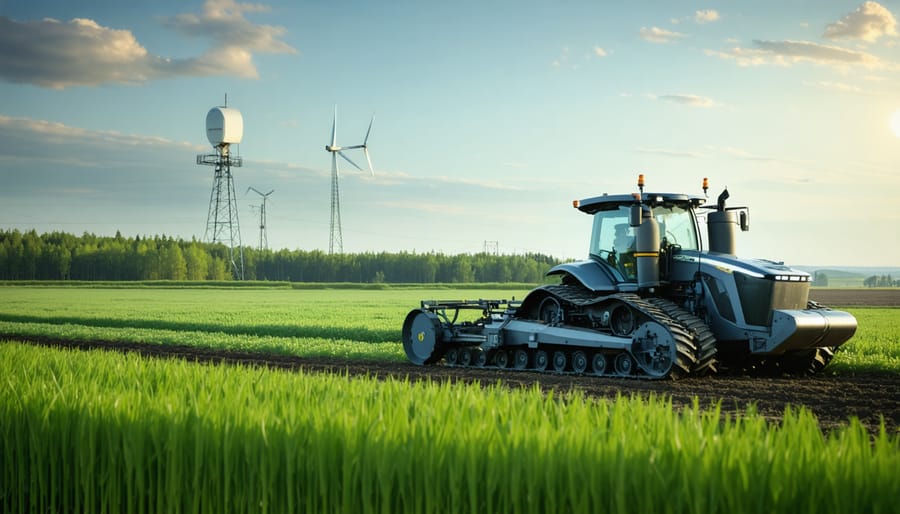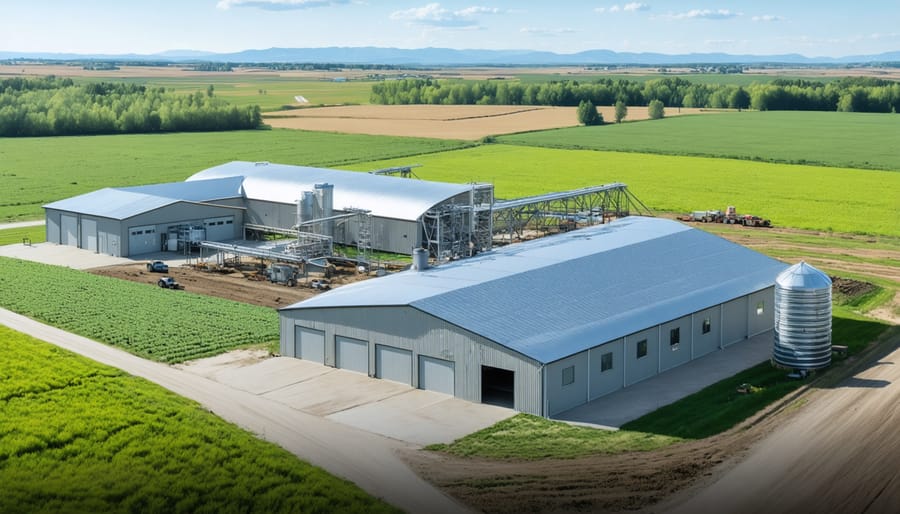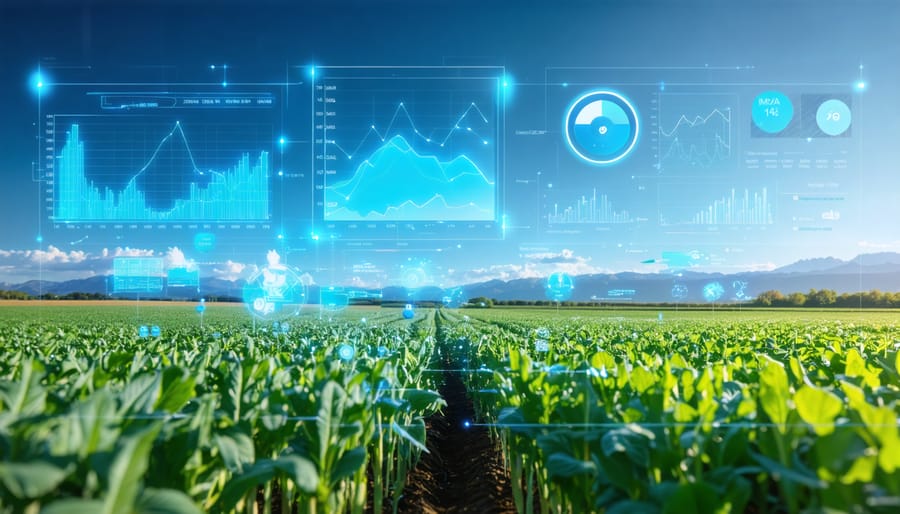In the face of increasing water scarcity and climate volatility, sustainable irrigation systems have become the cornerstone of modern agriculture’s survival. Across Alberta’s diverse agricultural landscape, farmers are revolutionizing their water management practices, achieving up to 40% reduction in water consumption while maintaining or improving crop yields. These innovative systems combine precision technology, soil moisture monitoring, and automated controls to deliver water exactly where and when crops need it most.
By integrating weather-based scheduling, soil moisture sensors, and efficient drip irrigation networks, Canadian farmers are pioneering a new era of sustainable agriculture that protects both their livelihoods and our precious water resources. From small-scale market gardens to large grain operations, these adaptable solutions are proving that profitability and environmental stewardship can work hand in hand.
The transformation toward sustainable irrigation isn’t just about technology—it’s about securing our agricultural future while preserving the natural resources that make farming possible. As climate patterns become less predictable, these systems offer a resilient approach to water management that helps farmers thrive in challenging conditions while contributing to long-term environmental sustainability.
Understanding Modern Irrigation Infrastructure
Smart Monitoring Systems
Modern farming in Alberta has embraced intelligent monitoring solutions that take the guesswork out of irrigation management. At the heart of these innovations are soil moisture monitoring systems, which provide real-time data about soil conditions across your fields.
Weather stations equipped with rain gauges, wind sensors, and temperature monitors work alongside these soil sensors to create a comprehensive picture of your farm’s environmental conditions. These stations can predict rainfall patterns and help you adjust irrigation schedules accordingly, preventing both over-and under-watering situations.
Automated control systems tie everything together, allowing you to manage your irrigation from your smartphone or computer. Many Alberta farmers have reported water savings of 20-30% after implementing these smart systems. The controls can automatically adjust water flow based on soil moisture levels and weather forecasts, ensuring optimal water usage even when you’re away from the field.
These systems also store historical data, helping you make informed decisions about future irrigation strategies while tracking your farm’s water efficiency improvements over time.
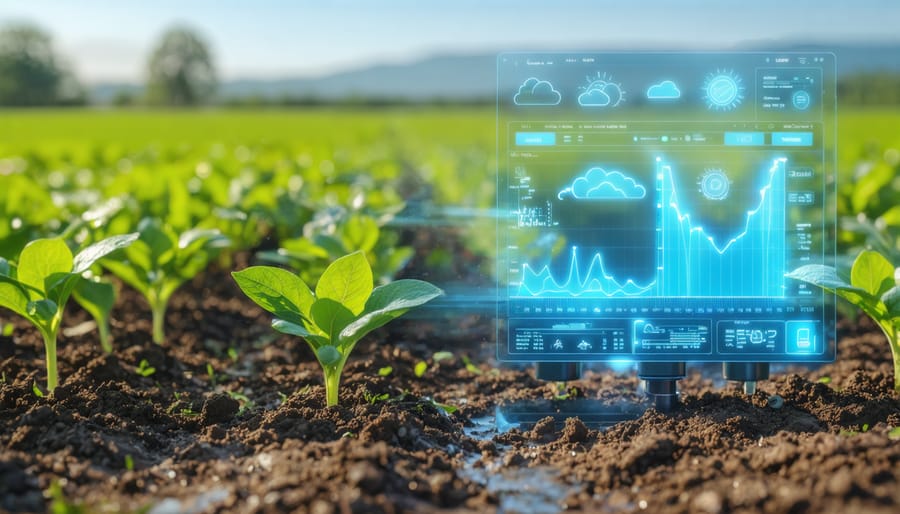
Water-Efficient Distribution Networks
Modern water-efficient distribution networks are revolutionizing irrigation practices across Alberta’s farms through smart water management solutions that maximize crop yield while minimizing water waste. Drip irrigation systems, which deliver water directly to plant roots through small tubes with precise emitters, have shown water savings of up to 70% compared to traditional flooding methods.
Precision sprinklers equipped with soil moisture sensors and weather monitoring capabilities adjust water distribution based on real-time conditions. These systems are particularly effective in our variable prairie climate, where wind and sudden temperature changes can impact irrigation efficiency.
Variable rate irrigation (VRI) technology has gained popularity among Alberta farmers, allowing for customized water application across different zones within the same field. Using GPS mapping and soil data, VRI systems can reduce water usage by 25% while maintaining or improving crop quality.
Local farmers who’ve implemented these systems report significant improvements in water conservation and crop health. For example, rotating sprinkler nozzles with pressure regulators have helped maintain consistent water pressure and distribution, ensuring uniform crop growth while reducing energy costs and water consumption.
Water Conservation Techniques
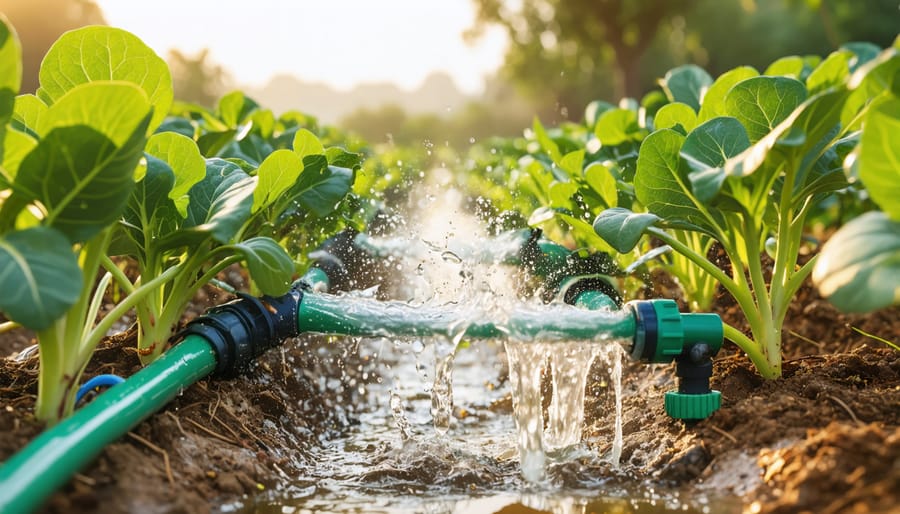
Soil Management Strategies
Effective soil management is crucial for maximizing the efficiency of any irrigation system. By implementing sustainable soil management practices, Alberta farmers can significantly reduce water consumption while maintaining crop productivity.
Mulching stands out as a key strategy for moisture retention. Whether using organic materials like straw and wood chips, or biodegradable plastic mulch, these protective layers can reduce evaporation by up to 30%. Many Prairie region farmers have found success with crop residue mulching, which not only conserves moisture but also improves soil structure and organic matter content.
Incorporating soil amendments like compost and biochar can dramatically improve water retention capacity. These materials create a more porous soil structure that holds moisture longer while promoting healthy root development. Local studies show that farms using amended soils typically reduce irrigation frequency by 20-25% compared to untreated fields.
For optimal moisture retention, consider implementing cover crops during shoulder seasons. Crops like fall rye and clover protect the soil surface while building organic matter content. Many Alberta farmers have successfully paired these techniques with minimum tillage practices to maintain soil structure and natural water-holding capacity.
Remember to regularly monitor soil moisture levels using simple tools like moisture meters or the traditional feel test. This helps in making informed decisions about irrigation timing and volume, preventing both over and under-watering scenarios.
Scheduling and Timing Optimization
Effective scheduling and timing are crucial elements of a sustainable irrigation system, particularly in Alberta’s variable climate. The key is to water deeply but less frequently, encouraging deeper root growth and stronger plants that can better withstand dry periods.
For most crops in our region, early morning irrigation (between 4:00 AM and 10:00 AM) is optimal, as wind speeds are typically lower and evaporation rates are minimal. This timing allows water to penetrate the soil effectively while reducing water loss through evaporation.
Local farmer Matt Thompson from Lethbridge shares, “We’ve cut our water usage by 30% simply by adjusting our irrigation timing and using soil moisture sensors to guide our schedule.” Modern soil moisture monitoring systems can help determine exactly when crops need water, preventing both under and over-irrigation.
Consider these practical guidelines for optimal scheduling:
– Monitor weather forecasts and adjust irrigation accordingly
– Check soil moisture levels at different depths (15-30 cm for most crops)
– Account for crop growth stages, as water needs vary throughout the season
– Use ET (evapotranspiration) rates to fine-tune irrigation timing
– Implement automatic shut-off systems for rainy conditions
Remember that different soil types require different approaches. Sandy soils need more frequent but shorter irrigation periods, while clay soils benefit from longer, less frequent watering sessions. Working with your local agricultural extension office can help develop a customized schedule that matches your specific soil conditions and crop requirements.
Alberta Success Stories
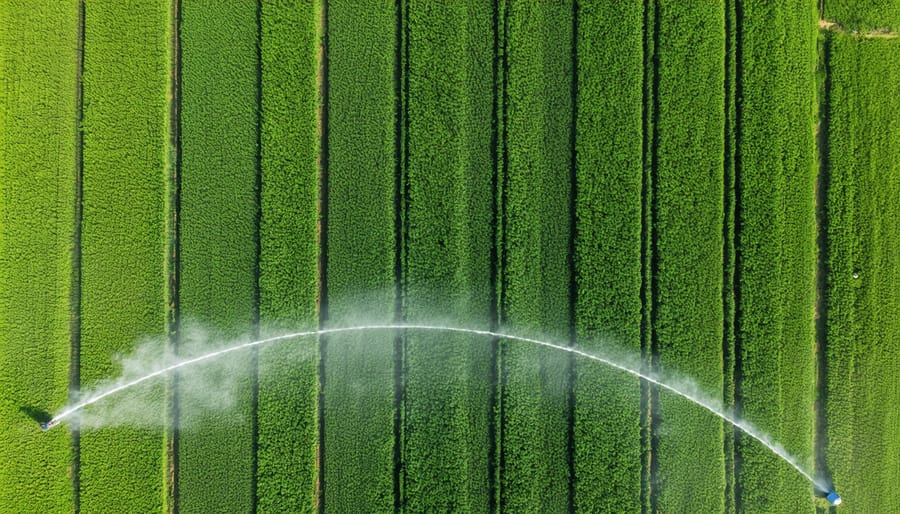
Case Study: Southern Alberta Farm
The Henderson family farm, located 20 kilometers east of Lethbridge, has become a shining example of sustainable irrigation practices in Southern Alberta. In 2019, third-generation farmer Sarah Henderson implemented a comprehensive irrigation upgrade that transformed their 800-hectare operation into a model of water efficiency.
The farm’s previous flood irrigation system was consuming approximately 7,500 cubic meters of water per hectare annually. After installing a variable-rate pivot irrigation system equipped with soil moisture sensors and weather monitoring technology, water usage dropped by 40% while maintaining crop yields.
“We knew we needed to change, especially with the increasing dry spells we’ve been experiencing,” explains Sarah. “The new system allows us to apply water precisely where and when it’s needed, rather than following a fixed schedule.”
The Hendersons’ system includes:
– Three pivot irrigators with GPS guidance
– Soil moisture probes at 15 strategic locations
– Weather monitoring station
– Smart control system accessible via smartphone
– Variable-rate nozzles for precise water distribution
The results after three growing seasons have been remarkable:
– Water usage reduced by 40%
– Energy costs decreased by 35%
– Crop yields increased by 15%
– Soil health improvements noted through annual testing
– Return on investment achieved within two years
The project received partial funding through the Canadian Agricultural Partnership, covering 30% of the $425,000 installation cost. The Hendersons report annual savings of approximately $75,000 in water and energy costs.
Local agricultural extension officer Mike Thompson notes, “The Henderson farm demonstrates how modern irrigation technology can benefit both the environment and the bottom line. Their success has inspired at least dozen other farms in the region to pursue similar upgrades.”
The farm now regularly hosts field days for other farmers interested in sustainable irrigation, sharing their experiences and data to help others make informed decisions about irrigation modernization.
Implementation Guidelines
Assessment and Planning
Before implementing a sustainable irrigation system, conducting a thorough assessment of your farm’s specific needs and conditions is crucial. Start by mapping your land’s topography, soil types, and existing water sources. Consider factors like annual rainfall patterns, crop water requirements, and seasonal variations typical to your region in Alberta.
Work with local agricultural extension services to analyze your soil’s water-holding capacity and infiltration rates. This information will help determine the most efficient irrigation methods for your farm. Many producers are now incorporating climate-smart farming technologies into their assessment process, using soil moisture sensors and weather monitoring systems to gather precise data.
When designing your system, consider:
– Available water sources and their reliability
– Energy requirements and costs
– Labour availability and management capacity
– Crop rotation plans
– Field size and shape
– Long-term sustainability goals
Create a detailed implementation timeline that accounts for seasonal changes and crop cycles. Include regular maintenance schedules and potential system upgrades. Remember to factor in local water regulations and permit requirements.
Consider starting with a pilot project on a smaller section of your farm to test and refine your approach before scaling up. This method allows for adjustments and helps ensure your investment delivers the expected returns while maintaining sustainable water usage.
Funding and Support Resources
Alberta farmers looking to implement sustainable irrigation systems have access to numerous funding opportunities and support resources. The Canadian Agricultural Partnership (CAP) offers grants of up to $500,000 for irrigation infrastructure improvements, covering up to 50% of eligible project costs. Alberta’s Irrigation Enhancement Program specifically targets modernization projects, providing funding for technologies that improve water-use efficiency.
The Agriculture Financial Services Corporation (AFSC) provides low-interest loans specifically designed for irrigation system upgrades. These loans offer flexible repayment terms and competitive interest rates to help manage implementation costs effectively.
Technical support is readily available through Alberta Agriculture and Irrigation’s network of irrigation specialists. These experts offer free consultations, system assessments, and guidance on best practices for sustainable irrigation management. The Irrigation Technology Centre in Lethbridge provides hands-on training and demonstrations of various irrigation systems.
Local irrigation districts also offer valuable resources, including workshops, field days, and practical advice on system selection and maintenance. The Environmental Farm Plan program provides additional support through one-on-one consultations and educational materials specific to sustainable irrigation practices.
For ongoing support, farmers can connect with the Alberta Irrigation Technology Centre’s helpline or join regional agricultural societies that regularly share knowledge and experiences about sustainable irrigation practices. Regular updates about new funding opportunities are available through Alberta Agriculture’s monthly newsletter and website.
As we’ve explored throughout this article, sustainable irrigation systems are not just an option for the future – they’re a vital necessity for Canadian agriculture today. The combination of water-efficient technologies, smart monitoring systems, and regenerative farming practices offers a clear path forward for Alberta’s agricultural community.
By implementing these sustainable irrigation solutions, we’ve seen farmers across the province reduce their water usage by up to 40% while maintaining or even improving crop yields. The success stories from local farms demonstrate that the transition to sustainable irrigation is both practical and profitable, with many operators reporting significant cost savings on their water and energy bills within the first two years.
The time to act is now. With available government grants, technical support from agricultural extension services, and a strong farming community ready to share experiences and best practices, Alberta farmers have never been better positioned to make this important transition. Whether you’re starting with a simple soil moisture monitoring system or planning a complete irrigation overhaul, every step toward sustainability counts.
Remember, sustainable irrigation isn’t just about conserving water – it’s about building resilient farm operations that can thrive for generations to come. By working together and sharing our knowledge, we can ensure that Alberta’s agricultural sector remains strong and sustainable well into the future. Contact your local agricultural extension office today to learn more about how you can begin your journey toward more sustainable irrigation practices.

